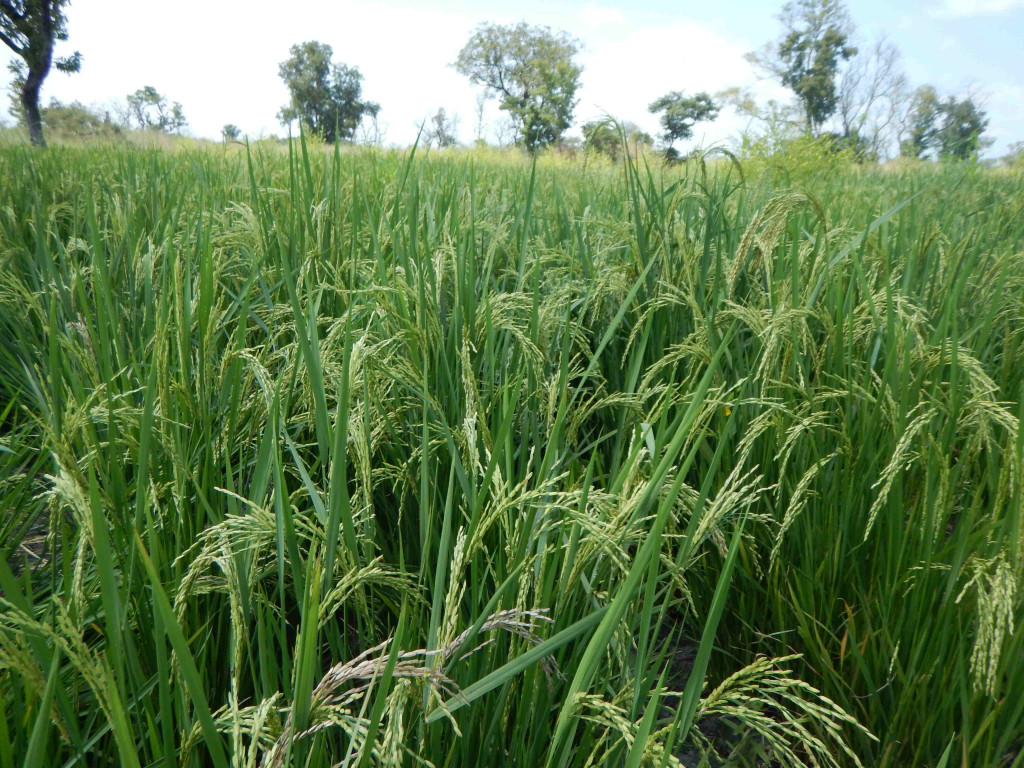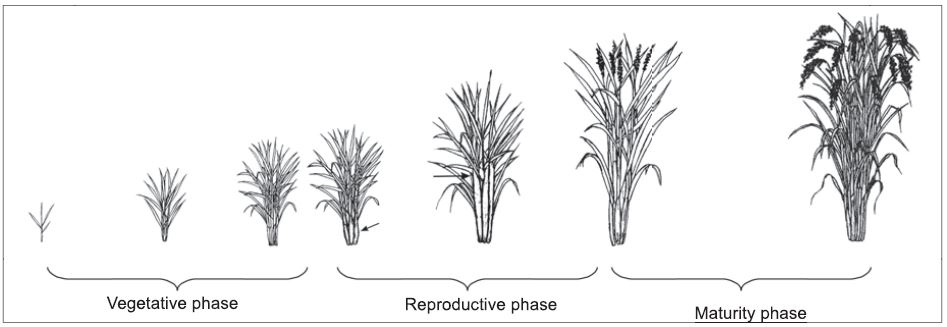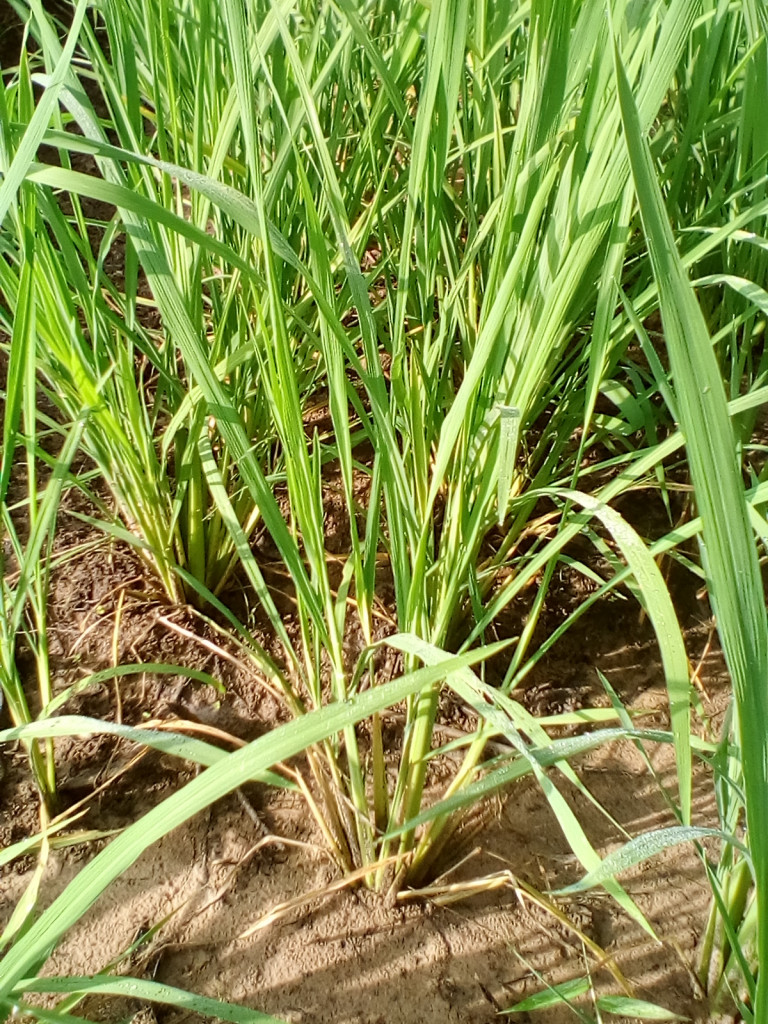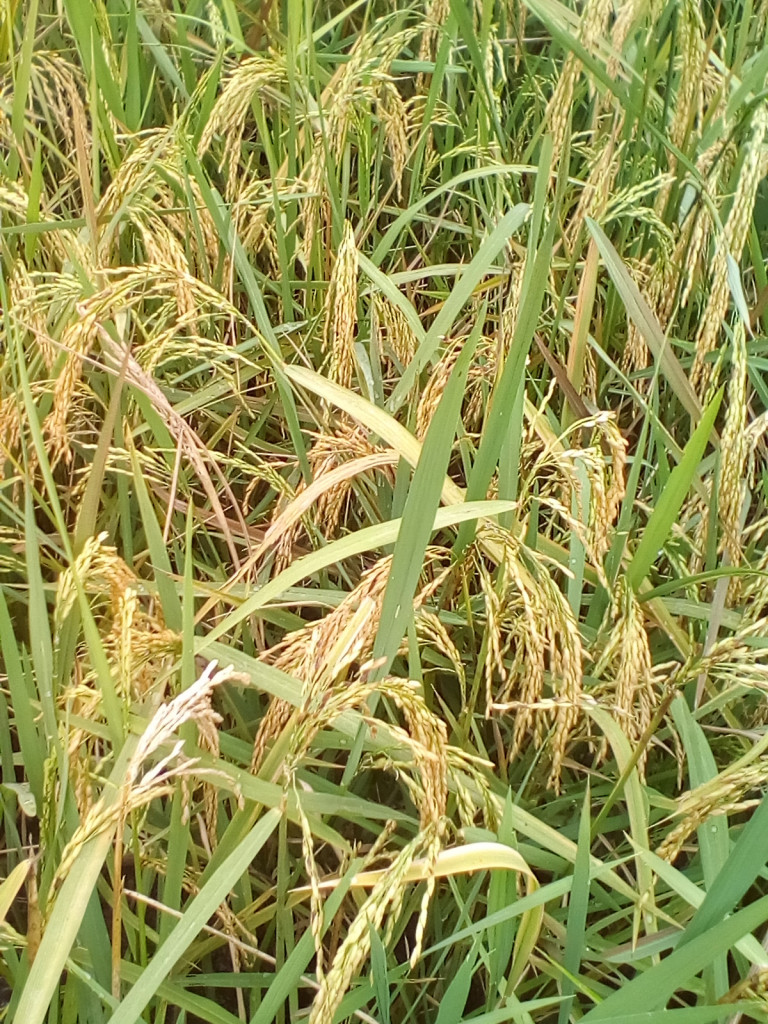Introduction
The
production of rice of good quality and in desirable quantity requires a
deep knowledge of the plant, its phases of growth and development and
their characteristics, as well as the implementation of the appropriate
technical itineraries. This
begins with the selection of sites and quality plant material (seed)
and continues until harvest and even post-harvest operations.
It
must be remembered that the grain yield of rice is a good success of
farming operations during all phases of rice growth and development. However,
the most critical growth stages that condition yield are planting,
tillering, panicle formation, flowering, and maturation. Bad operations during these stages are irreversible. Learning techniques to perform these operations at the field level deserves special attention.

Rice field
Brief description of the rice plant
Rice is an annual plant that shares the same foods as the annual grasses that live with it.
So
in the rice environment there is always competition for nutrients
(fertilizer), water and light that must be avoided each time during the
whole cycle. The rice plant has three essential parts that the producer must recognize and understand. It's about :
- Roots that draw water and nutrients The more roots there are, the more they bring food to the plant. Note that the roots of the rice plant are superficial (grow only in the 20 to 30 cm below the ground). So you need a very loose soil or worked well to facilitate their growth.
- The stems are the external organs. The more tillers, the more panicles. Rice tillers of any variety multiply between 14 and 60 days after sowing. The
tillers that are born can survive and tassel if and only if the plant
lives in an environment without competition and with the timely intake
of fertilizers
- The panicles are the inflorescences that carry the grains of rice. The number of panicles depends on the number of tillers emitted at the start and the availability especially of the nitrogen brought in the form of urea (second contribution of fertilizer).
Growth phase and rice development stages
During the vegetative cycle, the rice plant goes through three (03) fundamental phases:
- the vegetative phase
- the reproductive phase,
- the filling phase of the grains and ripening
 The 3 basic phases of the vegetative cycle of the rice plant
The 3 basic phases of the vegetative cycle of the rice plant
During the vegetative phase the producer must take care of the stages:
Germination:
Use quality seeds and good density to have the recommended number of plants per hectare. During germination the seedling that leaves is very fragile and susceptible to attack by insects and diseases. So you need a well-prepared, very fertile soil. Stress-resistant
varieties commonly encountered in the area (including early cycle
drought) or recommended practices should be used (adherence to the crop
schedule (the correct sowing date).
Tilting stage:
It starts after the appearance of the fifth leaf, about three weeks after direct seeding. The tillers multiply according to the varieties, the density of sowing and the conditions. Rainfed rice (plateau) varieties normally produce 4 to 8 tillers while lowland varieties produce 16 to 100 in. Tillering is maximal about 40 to 50 days after transplanting or direct seeding. After reaching its maximum value, the number of tillers decreases as a result of the disappearance of weaker tillers. Applying too much nitrogen fertilizer during tillering promotes tillering to the detriment of reproduction, so just apply the amount required at the beginning of tillering.

Tilting stage
Stage of panicular initiation:
It is manifested by the appearance of the flower bud. At this stage, most plants are the same size in the field, and the last '' flag '' is clearly visible. During this stage the field must be clean and the second urea fertilizer application is applied.
Reproductive phase
During the reproductive phase special attention is required during flowering. It lasts 3-5 days depending on the size of the panicle and the speed at which the panicle emerges. The flower opens from 9 am to 4 pm in the evening. The flower stays open between 40 and 120 minutes. Flowering always starts from the top and gradually goes down. In rice, flowering happens during the day. We must also avoid jostling the plants during this stage. This is not the time to weed or fertilize the plants. But you need water.
The filling phase of the grains and ripening:
This phase is the ultimate period of development of the rice plant. Its duration is 30 to 35 days whatever the variety. There are three stages in this phase.
- The milky stage : the seed is still green and contains white liquid (milk). Under the weight of the seeds which are still dense, the panicles remain curved. Sweet smells that emerge from the grains in formation attract birds. Bird hunting must be organized from this stage. Rice needs water and urea to get through this phase.
- The dough stage : with the amount of carbohydrates transported to the developing grain, it begins to lose water. The developing grain is compressed inside the bale where it takes its final form. The developing grain then moves to the soft, medium and hard pasty stages. There is a change of color of the seed.
- Maturity stage : the seed becomes harder, and its color changes, but depends on the variety. In general, the grains at the top of the panicle are the first to fill and are therefore larger and heavier. After maturation empty the water from the pots.

Ripened rice
NB:
The vegetative cycle stages of rice during which the components of
yield are determined are: sowing (number of plants present), tillage,
panicle formation, flowering and maturation. Environmental factors and cultural practices affect each of these stages. So, care must be taken and applied properly (on time and at the recommended doses)
Yield = Number of panicles per unit area X Number of spikelets per panicle X fertility of spikelets × weight of grain